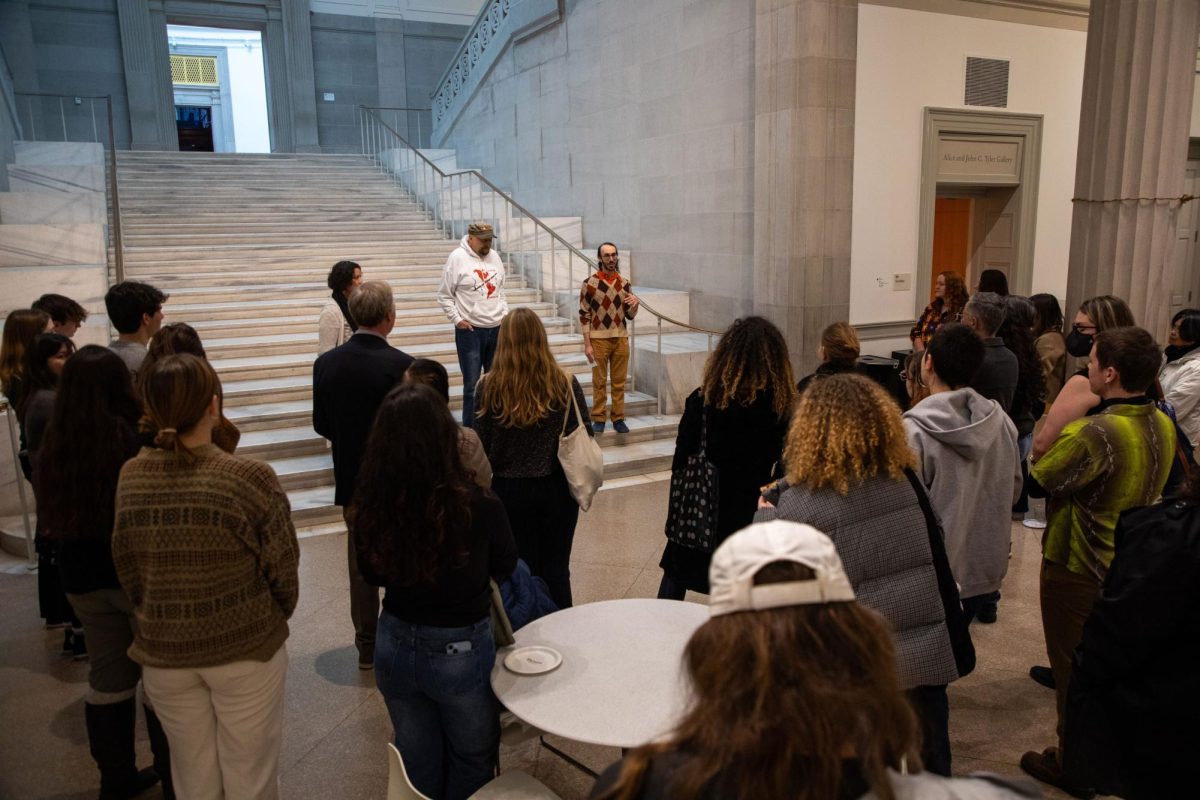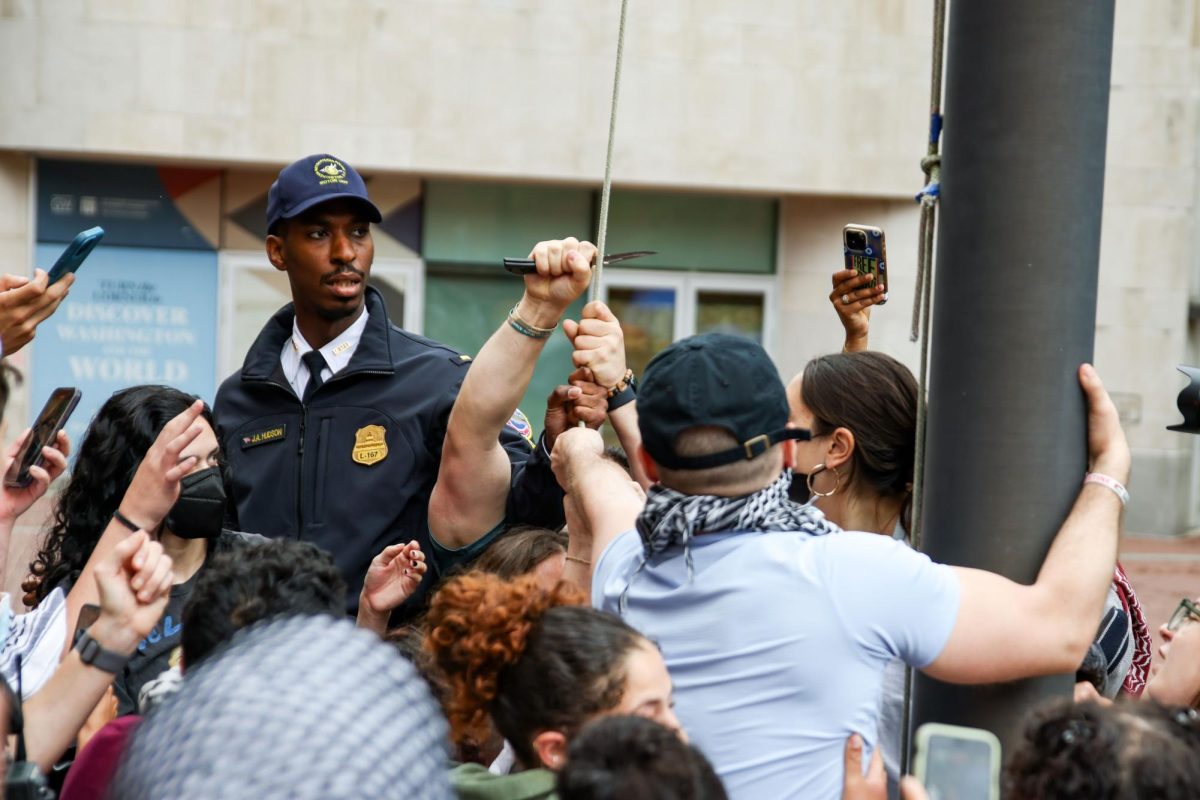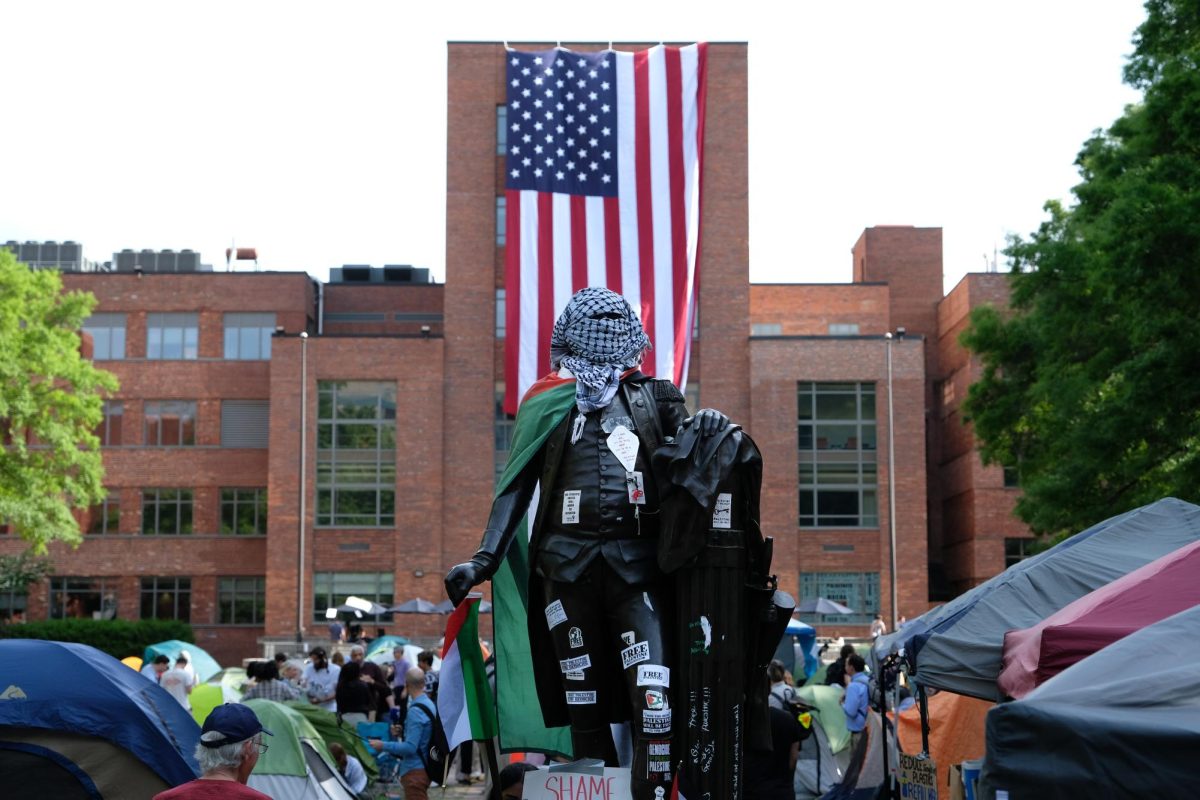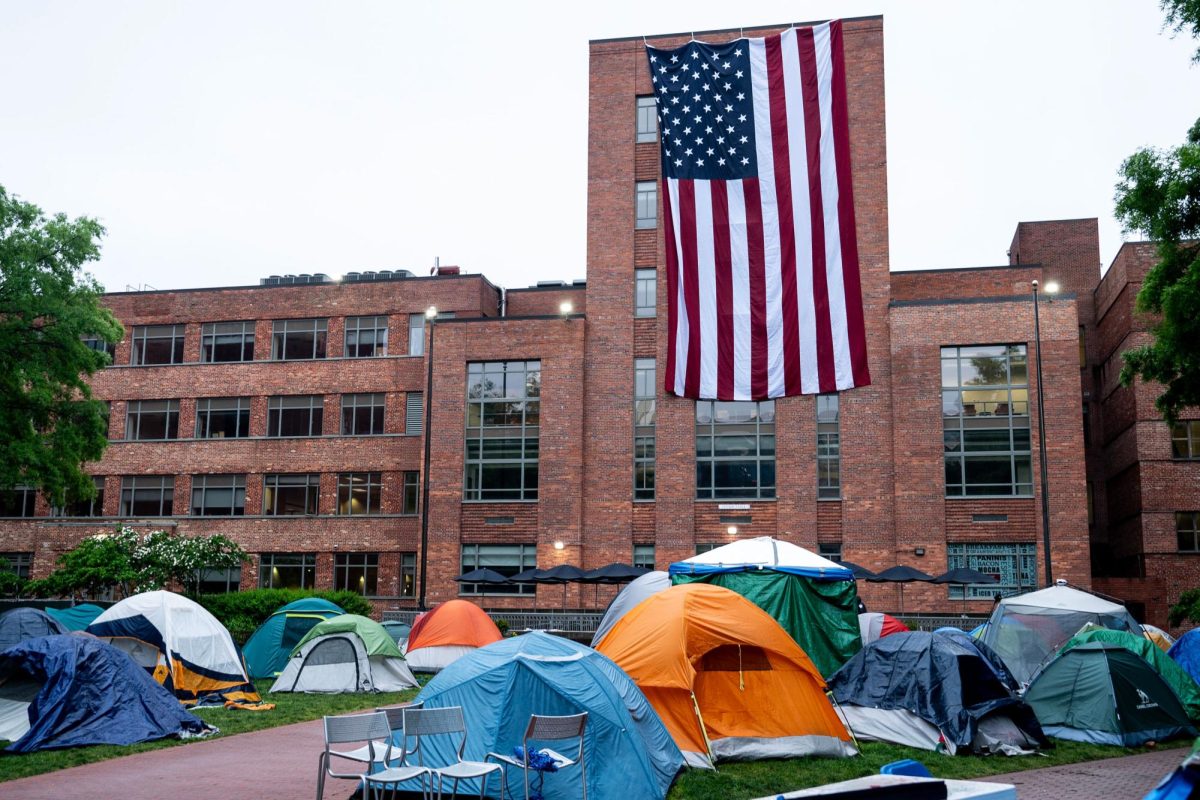A river of blue chiffon cuts across a wall of the center atrium in the Flagg Building, charting the course of the Potomac River and the history of the Piscataway people native to the land that the District now occupies.
The river is part of an exhibit titled “(Up)Root(ed): Uplifting Native Ecology and Indigenous Visibility on Campus” that opened Dec. 6 and features textured maps of changing postcolonial coastlines and a zine highlighting common native and invasive plant species on campus. Students in the “Landing in Piscataway Terrain” fellowship began work in late September and curated the exhibit — which will be on display through Dec. 16 — to highlight Indigenous communities and biodiversity in the D.C. area.
Shawn Shafner, a graduate student and the founder of the fellowship, said studying Indigenous communities’ relationship with the environment that makes up the Foggy Bottom Campus brings more visibility to Indigenous communities and serves as a first step toward restorative justice.
“This scholarship was about learning where we’ve come from, understanding where we are on our campus and thinking about how we move forward and how George Washington’s campus can be in greater alignment with Native ecology and Indigenous visibility and thriving,” Shafner said in a speech at the exhibit to a crowd of more than 30 people.
The Piscataway’s traditional territory extends along the Potomac River, from the Chesapeake Bay through modern-day Baltimore. The Piscataway people made up a confederacy of tribes ruled by the “Tayac,” or emperor, and were primarily farmers with skills in hunting and fishing.
The fellowship launched this September through a public-service grant from the Honey W. Nashman Center for Civic Engagement and Public Service and enrolled 17 students to study Native ecology. The program partnered with the Accokeek Foundation — a nonprofit based in Accokeek, Maryland’s Piscataway Park that educates the public about the park’s natural environment and Piscataway history.
Shafner said he began researching the Piscataway land the Flagg Building sits upon while pursuing a master of fine arts in social practice art. He said his research of Piscataway history led him to the Accokeek Foundation, where he discussed how to set up a partnership between GW and the organization.
“I really wanted to be learning from Indigenous communities, I want to be supporting them,” Shafner said. “And I felt like GW has resources, so how could we be there doing something?”
Shafner said Zí Proctor, the stewardship coordinator at the Accokeek Foundation and a Piscataway farmer, told him that one of the best ways to support Indigenous communities is to learn about and engage with their ecology to restore the natural resources Indigenous people use to support themselves.
“We’re on your land,” Shafner said. “Tell us about how you see this space and then let us be of service to help removing invasive plants that challenge the native ecosystems and in helping to cultivate those Indigenous ecologies that again, can restore those lifeways.”
Shafner said the program originally planned to conduct a campus sustainability audit but discovered one had already been completed in 2017. He said he met with representatives from facilities and the Office of Sustainability to incorporate the audit into a plan to remove invasive plant species from campus spaces and replace them with Native plants.
Students in the program visited Piscataway Park and the Accokeek Foundation for service days, a Native tree walk and educational experiences, like planting at the foundation’s garden, throughout the semester, Shafner said. He said some students looking to promote Native ecology sowed native wildflowers and other plants into the soil of Anniversary Park on F Street.
“My hypothesis is that engaging with the land itself, with the native land, exploring our urban campus a little bit, and the ecology there, in my own experience, like learning the names of plants helps me feel at home,” Shafner said.
Anjela Barnes, the executive director of the Accokeek Foundation, said the foundation’s work falls under the concept of “Reimagining Accokeek,” which uplifts the voices of Indigenous communities and protects natural ecosystems by learning how plants and animals can share resources to maintain biodiversity.
She said traditional methods to learn about and care for native ecology are necessary to protect biodiversity, which is in Indigenous communities’ hands. Indigenous lands account for 80 percent of the world’s remaining biodiversity, home to a wide range of animals, plants, fungi and microorganisms that indicate healthy environments.
“We’re here on this Mother Earth that is providing us and without it, we can’t survive,” Barnes said in a speech at the exhibit. “So it’s really important that we really, really work hard together.”
Addy Dunbar, a fellow and sophomore majoring in international affairs with a concentration in environmental studies, said she was drawn to the program through her interest in sustainability and because of the program’s emphasis on including Indigenous voices in sustainability.
“Having something focused on Indigenous visibility in my life as I do other things focused on sustainability has helped me stay focused on what is actually important here, which is that, you know, this is not our land,” Dunbar said.
Dunbar said she hopes GW will move away from routinely planting and removing flowers around campus, like certain perennial plants, that are not native to the land and instead focus on planting and maintaining native plants.
“The proper step for GW would be moving away from that regular planting because it’s just aggressive on the soil,” Dunbar said. “It’s not good for the plants themselves.”
Juliana Kane, a fellow and master’s student in the Museum Studies Program, said she heard about the program through her involvement with the student organization Students for Indigenous and Native American Rights. She said the most compelling events of the program involved meeting with the Piscataway people and engaging with the land of Piscataway Park and Foggy Bottom Campus.
“All of our journeys were different and very personal and cool, and the way that our activities allowed us to make connections with the land,” she said.





